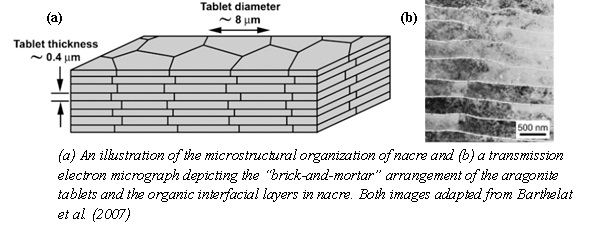|
|
| |
| Analysis, Design, and Characterization of a Bio-inspired Cementitious Composite |
| Danny Soltan Email: dsoltan@umich.edu |
 |
Project Motivation
Concrete is the most important construction material of the last century and is presently the most used material worldwide. Its compressive strength gives it utility in the construction of roads, bridges, and in structures of all sizes. However, limited in tensile strength and ductility, concrete infrastructures have inadequate durability and resiliency. These limitations are demonstrated by the need for frequent road repair, pandemic bridge deterioration, and the fatal failures of infrastructures due to natural disasters worldwide. These are issues of sustainability and human safety, and they affect all modern societies. My research is an investigation of hierarchical composite design architecture that can be used for cementitious material to improve upon concrete’s poor tensile strength and ductility. Such a composite organization would enhance the mechanical and environmental performance of civil infrastructure, improving human safety and extending infrastructure lifetime. |
| |
 |
| |
Project Description
The inspiration for a robust cementitious composite design and an enhanced concrete comes from nacre, the iridescent material seen on the inside of abalone shells. Nacre is composed mostly of calcium carbonate (aragonite), which, like concrete, is brittle. However, nacre exhibits strength and ductility far superior to that of concrete, as well as the aragonite material from which it is built. This outstanding mechanical performance is derived from the material architecture, or how the material is organized. Micron-scale tablets of brittle aragonite are arranged in a tiled and layered construction with a thin, organic protein layer present at all of the interfaces. When deformed, these tablets slide relative to one another, distributing deformation over the whole material rather than localizing at flaws. This distributed, inelastic deformation and subsequent strain hardening give the material both high tensile strength and a high degree of damage tolerance— desirable properties for cementitious infrastructure.
Biomimicry of nacre has been previously attempted and even with some success. However, these synthetic materials share the millimeter size scale and slow processing/growth characteristics of natural nacre. My research explores the functionality and use of nacre’s composite design at length scales and with materials and processing that are germane to civil infrastructure. Using key features of nacre’s structure and using a high strength, high ductility variation of engineered cementitious composite (ECC) material as a building block, we hope to achieve both high tensile strength and ductility to improve the durability and resiliency of civil infrastructure. |
|
|
 |
|




